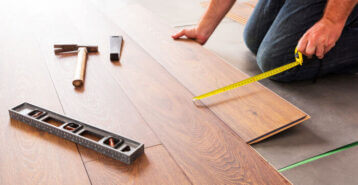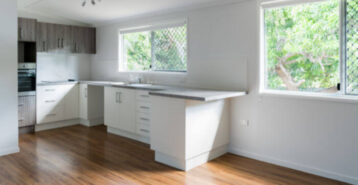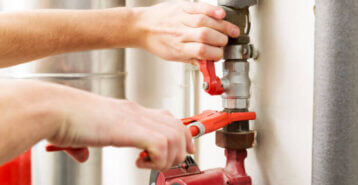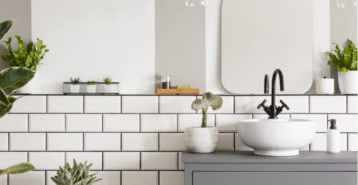Are you doing a flooring project?
Modernize can pair you with three to four pros in your area, so you can compare options and save time and money.
Few things in life bring as strong a sense of accomplishment as owning your own home. For many, home ownership is the culmination of years of hard work, prudent financial planning, perseverance, and personal sacrifice. However, those proud feelings can fade fast when faced with routine maintenance or costly repairs. Your home’s flooring is perhaps the most visible – and most used – feature of its interior. That’s why as a first-time homeowner, it’s important to learn basic flooring tips to keep your interior damage-free and looking its best.
With proper care, your hardwood, tile or stone flooring likely will outlast your time in your home. Other flooring materials, however, such as carpet or linoleum are much quicker to show signs of wear and damage from heavy foot traffic.
Modernize created this guide to provide some important flooring tips for first-time homeowners. We cover routine care for many different types of flooring, as well as how to recognize when your flooring is so worn or damaged that it’s time to replace it. We will even help you find a licensed flooring contractor in your area to help with that.
Flooring Renovation Tips for First-Time Homeowners
Flooring is as much a central design element of your new home as the color of the paint on the walls and the furniture placed throughout your residence. Neutral flooring colors create a more subtle mood for a room or space, while the lines, patterns and textures of tile or marble create more dramatic visual aesthetics.
If your new home lacks the flooring you’ve always wanted, luckily it is fairly simple to replace old or dated flooring. Here are some tips on how to create a flooring renovation budget, as well as a guide to discussing your project with a licensed contractor.
How to Choose a Flooring Type
Before you set up a meeting with a licensed flooring contractor, it’s best to narrow down your new flooring options – and that is not an easy task. There are literally hundreds of different types of flooring from which to choose.
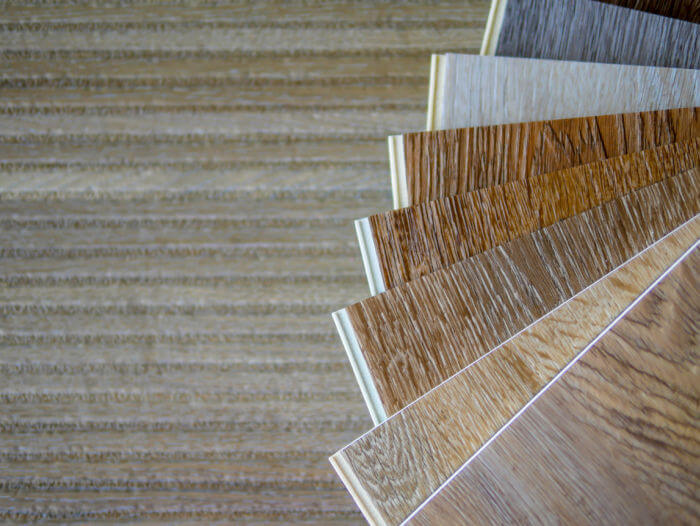
Some of the most common flooring options are carpet, tile and hardwood. Each material has its unique benefits and drawbacks. High-quality carpet is soft and luxurious, for instance. But it can also trap dust and detritus, and show wear much faster than hardwood. Tile, meanwhile, is nearly impervious to everyday wear, but it gets cold during the winter.
Reading our guide on the pros and cons of four of the common types of residential flooring can help first-time homeowners make more informed decisions about their flooring renovation projects.
Setting a Renovation Budget
If you have never done a flooring project before, you probably do not know where to start in terms of estimating project costs. You likely have questions about the cost differences between different types of flooring, as well as how much it costs to have a contractor come to your home and install it.
Flooring installations can cost anywhere between $1 and $20 per square foot installed. It all depends on the type of flooring you choose and local labor costs in your area. Keep in mind that if you like the look of higher-end floors such as tile or hardwood, there are several lower cost alternatives that mimic the look but keep your costs at a minimum.
It is also very helpful for homeowners to know that they have various financing and payment options for flooring renovations. You do not have to have the cash in full upfront in order to upgrade your home’s flooring – and that’s a relief. Be sure to investigate payment and financing options for your flooring project ahead of time.
Find the Right Contractor for Your Flooring Project
Whether you’re ready to begin your project now or need some expert advice, our network of contractors are here to help. With a few simple questions, we’ll find the best local professionals for you
How to Properly Clean Your Floors
Once you have fully moved in and gotten settled, you will likely establish a cleaning routine to keep your flooring looking sharp. Regardless of your type of flooring, the only way to have a clean floor that stands the test of time is to perform routine maintenance.
Vacuuming and Dusting
For carpet, that means breaking out the vacuum either daily, twice a week, or whatever effort satisfies your personal cleanliness standards. The more you vacuum, the more dust, dander, pet hair and other allergens you’ll remove from your home.
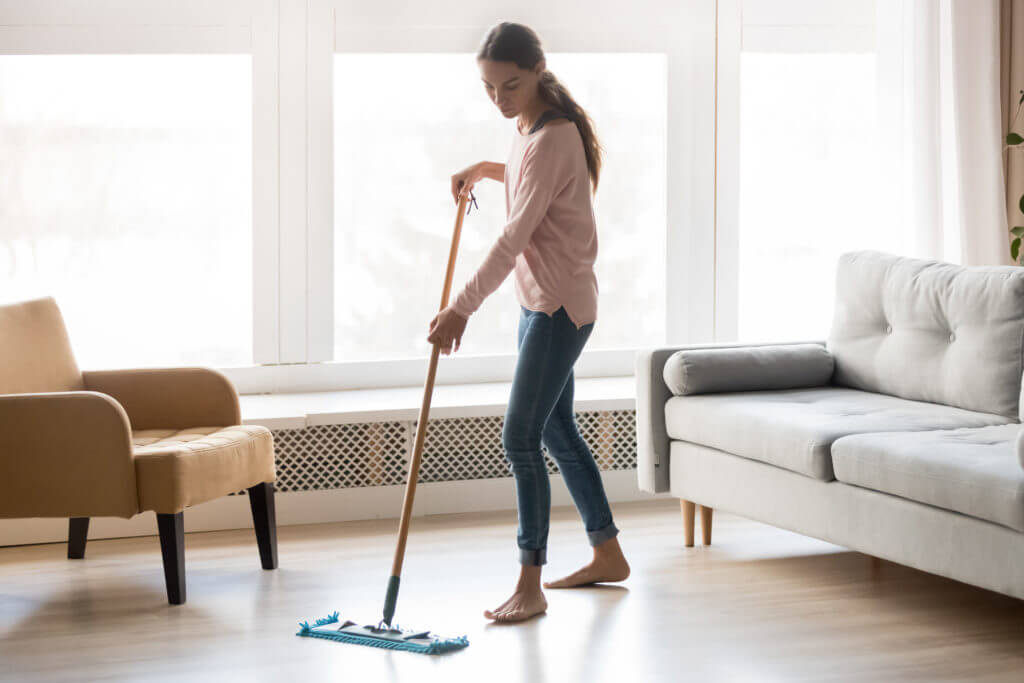
Dense flooring materials, such as hardwood, tile, slate or marble, require a different approach. You can use your vacuum to remove dust if you switch it to the “bare floor” setting, or you can use a broom or microfiber dust mop for daily cleaning. The latter can prove especially useful, since the synthetic strands on microfiber mops generate static electricity that makes dust and other nasty particulates cling to the mop head.
Wet Mopping
Routine wet mopping is also important to thoroughly deep-clean your flooring. If you prefer to use a commercial floor cleaning product, you will likely notice that certain cleaners leave unsightly streaks across your floors. You can prevent this by opting for plain old hot water, or by going back over your work with a drying cloth to eliminate the streaking.
If you have hardwood or engineered wood flooring, you will have to modify your approach and exercise a bit more caution when applying any type of liquid to hardwood flooring. You don’t want excess liquid to penetrate between joints and seams and cause damage to the flooring material. Always make sure to completely wring out your mop head prior to use, so that it is just damp and never sopping wet.
The most important part of taking good care of your home’s floors is to find a routine that works for you and stick with it.
Finding a Licensed Flooring Contractor
These flooring tips are meant to give first-time homeowners a better idea of how to care for their flooring, as well as how to choose the right type of flooring for those who are interested in upgrading. As a homeowner, it is always a good idea to build a good relationship with a home improvement contractor that can help you with upgrades, such as flooring renovations.
If you are ready to have new flooring installed, Modernize created a handy – and free – Contractor Checklist to help homeowners find licensed and reliable contractors in their area. Experienced flooring contractors likely will be able to fill in any gaps in your knowledge that we haven’t provided, as well as help you settle on the best type of flooring for your home.
Your new flooring can refresh the most-used spaces in your home, as well as increase your desire to be home. Flooring upgrades also can provide a boost to your home’s value during resale.
Find the Right Contractor for Your Flooring Project
Whether you’re ready to begin your project now or need some expert advice, our network of contractors are here to help. With a few simple questions, we’ll find the best local professionals for you
Reviews from Real Homeowners
Welcome to Homeowner Resources! We are the Modernize blog. Modernize pairs more than 3 million homeowners a year with pre-vetted contractors in their area. This blog started because we believe homeowners should know everything about their homes, from how their HVAC works to which front door colors they might love. On Homeowner Resources, you can find information on every part of your home, right down to how you can negotiate with contractors to get the best price. Here's more about the blog.
Need a contractor? Learn more about how Modernize finds the right pro for you.

